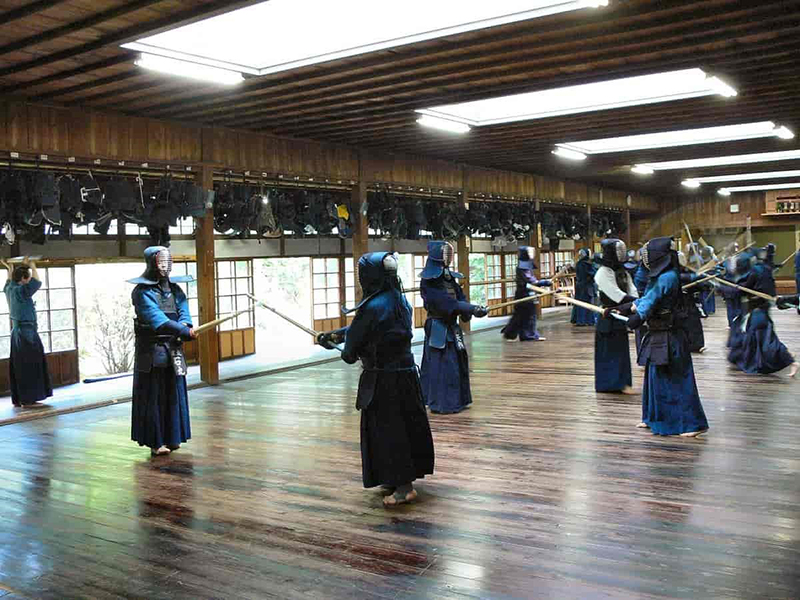 |
|
|
|
|
| General Information |
Kendo is a Japanese martial art, which descended from swordsmanship (kenjutsu). Practitioners use shinai (bamboo swords) and kendogu (protective armour) to strike each other.Kendo incorporates martial arts practices and values to promote the development of character through continued keiko (practice) (Tokeshi 2013). |
| History/Development |
According to the All Japan Kendo Federation, the roots of kendo can be traced back to the 11th century, during the Heian Era (794-1185), when the Japanese sword “nihonto” first emerged. The Japanese sword has a slightly arched blade with raised ridges. Its original model is said to be utilised by a tribe in northern Japan during the 9th century. Thenceforth, the samurai began to use this style of sword. As forging technology rapidly developed during the Kamakura period (1185-1333), its usage became popular and the term “Shinogi-wo-kezuru”, which means “grinding the shinogi together (fierce competition)” was produced (Bennett 2015; Tokeshi 2013).Following the Onin War (1467-77), many schools of swordsmanship (kenjutsu) were established. The Japanese sword was made by the Tatarafuki casting method which used high-quality iron sand. However, as this method was applied to firearms as well, the previous heavy-armoured battling style was converted to a lighter hand-to-hand style. As a result, this brought the advancement and specialization of sword forging techniques (Sasamori, Warner 1995).During the peaceful Edo period (1603-1867), swordsmanship changed from focusing on killing techniques to aiming to nurture humanity with concepts including “katsunin-ken” (the life-giving sword). These concepts were recorded in books such as Heiho Kadensho by Yagyu Munenori, Fudochi Shinmyoroku by Takuan Soho, Gorin-no-sho by Miyamoto Musashi. These books gave meaningful lessons on life, death, and appliance of swordsmanship in daily life (Bennett 2015).During the Shotoku Era (1711-1715) Naganuma introduced “Shinai” (bamboo practice sword) and “Kendo-gu” (armour) along with a training method that utilises them. This is claimed to be the origin of Kendo discipline. Accordingly, kenjutsu competitions became popular. This type of training in swordsmanship was retitled as “kendo” in the 20th century (Sasamori & Warner 1995; Bennett 2015). |
Transmission
(Policies/institutions) |
Today in Japan, Kendo is part of the regular curriculum in the education system from the secondary-school level to the university (Sasamori & Warner 1995).Kendo has been gaining more international practitioners since its establishment. In 1970, the International Kendo Federation (FIK) was established and the first triennial World Kendo Championships (WKC) was held in the Nippon Budokan. The 17th World Kendo Championships were held in Incheon, South Korea, where Kendo practitioners from 56 different countries participated. The 18th World Kendo Championships is scheduled to be held in Villebon-Sur-Yvette, France, in May 2021 (All Japan Kendo Federation 2020). |
| Relevant Organisations |
- International Kendo Federation
- All Japan Kendo Federation
- All United States Kendo Federation
- World Kumdo Association
- Korea Kumdo Association |
| Additional Materials |
|
| References |
- Bennett, A. (2015). Kendo: Culture of the Sword. Oakland, California: University of California Press
- Sasamori, J. & Warner, G. (1995). This is Kendo: The art of Japanese fencing. Rutland: C. E. Tuttle.
- Tokeshi, J. (2003). Kendo: Elements, rules and philosophy. Honolulu, Hawaii: University of Hawaii Press.
- 全日本剣道連盟: All Japan Kendo Federation. (n.d.). Retrieved August 07, 2020, from https://www.kendo.or.jp/. | | |